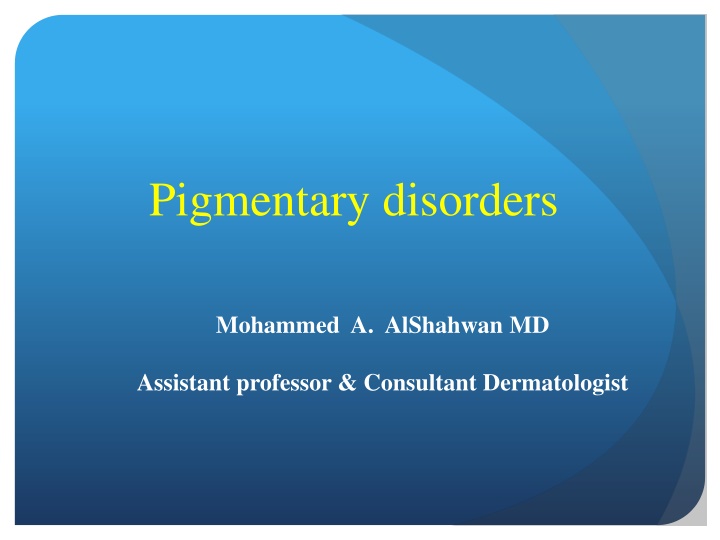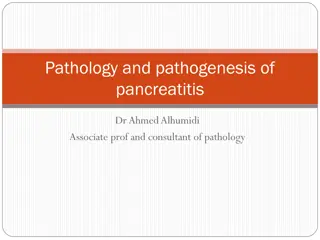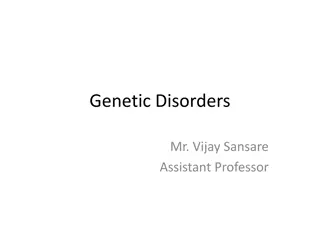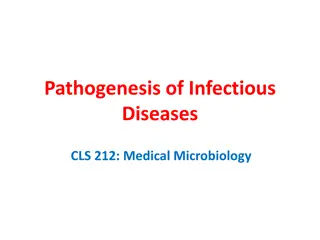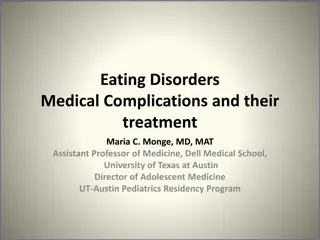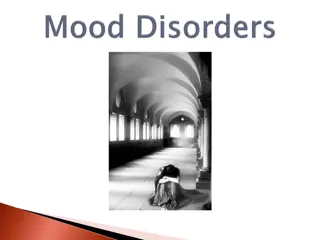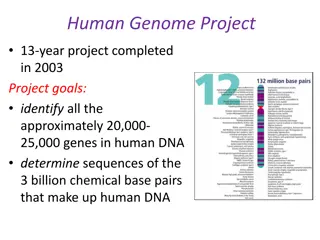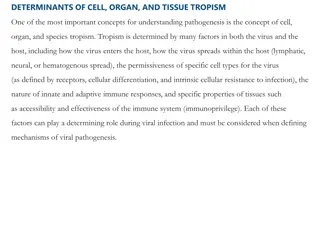Pigmentary Disorders: Pathogenesis, Features, and Management
Pigmentary disorders encompass a range of conditions affecting skin pigmentation, including freckles, melanocytic naevi, melasma, vitiligo, and more. This informative content by Mohammed A. AlShahwan, MD, covers the objective, pathogenesis, features, and management of these different pigmentary disorders in detail. From explaining freckles and different types of melanocytic naevi to addressing melasma and vitiligo, this resource provides valuable insights into these dermatological conditions. The content delves into factors like overactivity of melanocytes, sun exposure, genetic predispositions, and treatment options like sunblock, bleaching creams, and pigmented lasers. Additionally, it discusses various types of naevi, including blue naevi, halo naevi, Spitz naevi, acquired and congenital melanocytic nevi, and atypical naevi. Images help visually illustrate these conditions for better understanding.
Download Presentation

Please find below an Image/Link to download the presentation.
The content on the website is provided AS IS for your information and personal use only. It may not be sold, licensed, or shared on other websites without obtaining consent from the author.If you encounter any issues during the download, it is possible that the publisher has removed the file from their server.
You are allowed to download the files provided on this website for personal or commercial use, subject to the condition that they are used lawfully. All files are the property of their respective owners.
The content on the website is provided AS IS for your information and personal use only. It may not be sold, licensed, or shared on other websites without obtaining consent from the author.
E N D
Presentation Transcript
Pigmentary disorders Mohammed A. AlShahwan MD Assistant professor & Consultant Dermatologist
Objective Pathogenesis, features and management of different pigmentary disorders including: Freckle Different types of Melanocytic naevi Melasma Vitiligo
Freckle (Lentigo) Overactivity of an increased no. of melanocytes. Fair individuals Sun exposure in genetically predisposed individuals Sun block & bleaching cream Pigmented laser (recurrence)
Melanocytic naevi (mole) Acquired MN : very common, small, uniform, no need for treatment except ABCD ( ? Change in size shape, edge, color) Congenital MN: variable size could be Giant CMN (Bathing trunk) could harbor Malignant melanoma Atypical naevi (dysplastic): larger with one or more atypical signs 4 or more: risk of malignant melanoma in the subject .
Blue naevi : deep-blue color and common on face, hand or feet. Halo naevi: compound naevi with halo of depigmentation. Spitz naevi: common on children face with pink or pale brown color and in adult carry the risk of transformation to malignant melanoma
Atypical naevus (dysplastic)
Melasma (chloasma) Genetically programmed increase in melanogenesis Affecting the Face Could be induced by Pregnancy, OCP and excessive Sun exposure Treatment: sun block & bleaching cream
Vitiligo Acquired depigmentation Kobner phenomena Causes Genetic Autoimmune disease. Neural Cytotoxicity. Natural coarse Variable
Loss of normal melanocytes Dopa stain
TREATMENT Limited: Class 3 topical corticosteroids Topical Tacrolimus Topical PUVA Excimer laser Resistant but Stable of 2 years : Surgical treatment Generalized: Phototherapy (NBUVB ,PUVA) Bleaching agent
